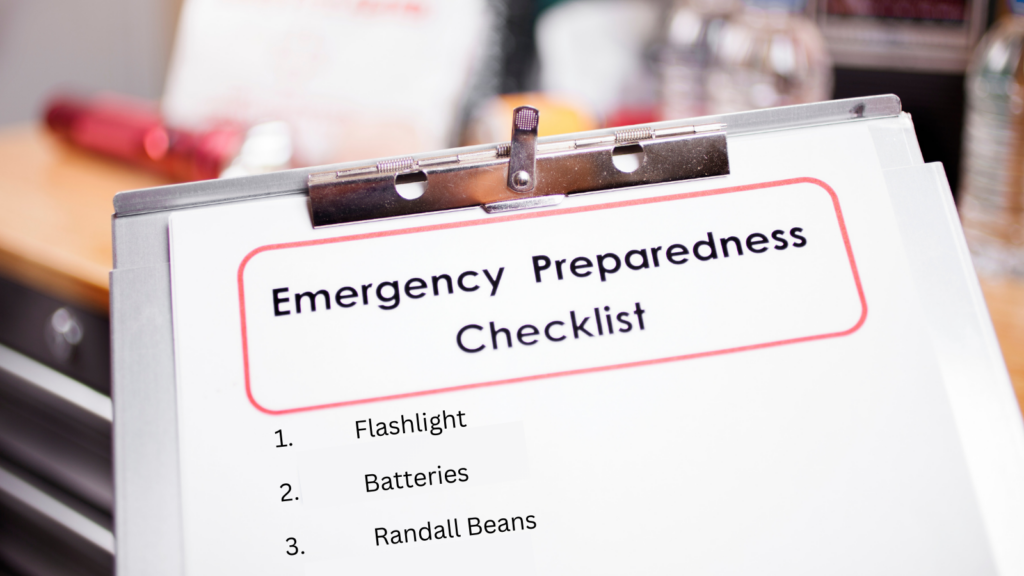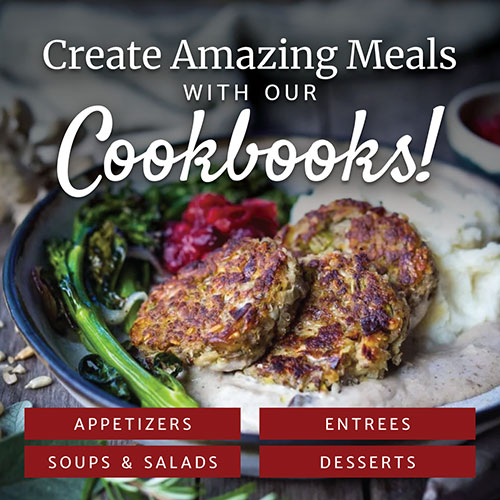
Almost all emergency food storage preparation lists have the same types of foods you should have on hand in your cellar or pantry in case of a prolonged power outage, a severe winter storm, or a zombie apocalypse. That’s because these foods are calorically dense, filled with nutrients, tasty, versatile, and shelf-stable without the need for refrigeration.
Common emergency pantry staples include:
• Peanut butter
• Crackers
• Protein or granola bars
• Nuts and seeds
• Dried fruit
• Canned meats, fruits, and veggies (with a can opener, of course!)
• Beef jerky
• Canned soups and stews
• Non-perishable canned or powdered milk
• Dry granola or another calorically dense cereal
• Rice, flour, and other dried grains
• Pasta and canned or jarred sauce
• Dried herbs and spices
• Infant formula or baby food to feed small children
• And last but certainly not least, beans!
At Randall Beans, we have a special fondness for beans, obviously.
Like any great emergency food, Randall Beans products have so many vital nutrients. Plus, they’re easy to use, and they’ll last for months or years when stored properly. And, with enough creativity, you can devise any number of delicious recipes using beans together with the canned meat, veggies, and rice in your emergency supply.
Let’s dive into all the reasons ready-to-eat Randall Beans are a perfect survival food.
Unopened jars will stay fresh for months (maybe even years).
One of the primary criteria for a great emergency storage food is that it has to remain shelf-stable for a long time. The last thing you want to do is stock up on bulk foods that will go bad before you get around to using them. You’ll have to constantly rotate your emergency pantry stock, which could be very costly. Or you’ll go to your pantry during or after a natural disaster only to find all your food is past its prime.
A jar of Randall Beans will last at least twelve months when stored properly with the seal intact.
In an emergency situation, you could probably get by on jarred or canned beans that are years past their packaging date.
However, the seal must be intact for a jar of beans to remain safe to eat months or years after it’s packed. If you notice any indications the lid seal may have been compromised, opt for a new jar if you have the choice.
Note that the same is true for any other canned or jarred food you have in your long-term storage pantry. Typically, once the seal is broken on a jar or a can has been opened, the food inside will last a few days or a week when refrigerated. In an emergency scenario without refrigeration, you’ll want to finish the entire contents in one or two sittings to be safe.
Beans are full of nutrients that will keep your body fueled when food is scarce.
When you’re enduring a period of food scarcity, the “ideal” food to reach for should have plenty of calories, protein, vitamins, and minerals. It just so happens that beans are packed with all of those nutrients, plus fiber, which will keep you “regular” and feeling full even if you find yourself in a rationing situation.
One single half-cup serving of Randall Great Northern Beans or Randall Pinto Beans contains 100 calories, 6 grams of protein, 6 grams of fiber, and 8% of your daily calcium and iron intake, among other nutrients.
Pair your beans with a good fat source—perhaps some canned meat—and you’ll have a complete meal that will keep you nourished and satiated.
It’s worth noting that beans aren’t a complete source of protein. While they contain eight of the nine amino acids you need to survive, they lack methionine. For daily diet purposes, this distinction isn’t terribly important because it’s likely you’ll be eating plenty of other foods that contain methionine alongside your servings of beans.
In long-term emergency situations, however, you’ll want to pair your beans with foods such as corn and rice since corn and rice both contain the methionine your beans lack. Together, beans and corn or beans and rice form complete proteins, so you can stay healthy even if you have to go for an extended time with little food variety. Dry rice and canned corn are also easy to store in your emergency pantry.
Ideally, you should include plenty of canned fruits and vegetables (and perhaps a few multivitamin supplements) in your emergency supplies to make sure your vitamin and mineral bases are covered. While beans paired with rice or corn form complete proteins, you can and will run into vitamin and mineral deficiencies if you eat nothing else for an extended period of time.
Randall Beans are pre-cooked and ready to go.
Cooking can be difficult in emergency situations. You may have a gas or charcoal grill, a camping stove, a wood stove, or a fireplace you can use if the power goes out, but you may run out of fuel if the power stays off too long. If the worst should happen and you find yourself unable to cook your food, you will appreciate having ready-to-eat foods.
Unlike dried beans, pre-cooked, plump, and pleasing Randall Beans are ready to eat at a moment’s notice. Sure, they may taste even better when simmered over low heat with bacon and some fresh vegetables, but in a pinch, all you really need is a spoon!
Even in non-emergency situations such as during the workweek—when your family is hungry, and you don’t feel like cooking an entire meal from scratch—it’s incredibly convenient to open a jar of delicious Randall Beans, add vegetables, meat, and spices, and heat them up quickly. You can have dinner on the table in 20 minutes or less! Not to mention a wide variety of satisfying salads you can make with these versatile beans.
Bean-centric survival food recipes will bring some flavor to your apocalypse.
Hopefully, the “apocalypse” we’re talking about is nothing more than an extreme weather event that knocks the power out for a few days.
But if you end up spending a significant amount of time sheltering from a longer emergency, you’ll definitely want to have some tasty meals in your repertoire that you can cook using the foods you have on hand.
Here are just a few of our favorite bean recipes that incorporate meat, veggies, and/or rice:
• White Bean Stir Fry With Vegetables and Rice
• Easy “College Student” Bean Soup
The idea here is to find recipes you and your family will love and don’t mind eating multiple times during a long-term emergency situation. Of course, you can also enjoy these recipes using fresh meat, veggies, and spices.
If you want to get creative with your survival food recipes, check out a few books on the topic and make a note of your favorites!

